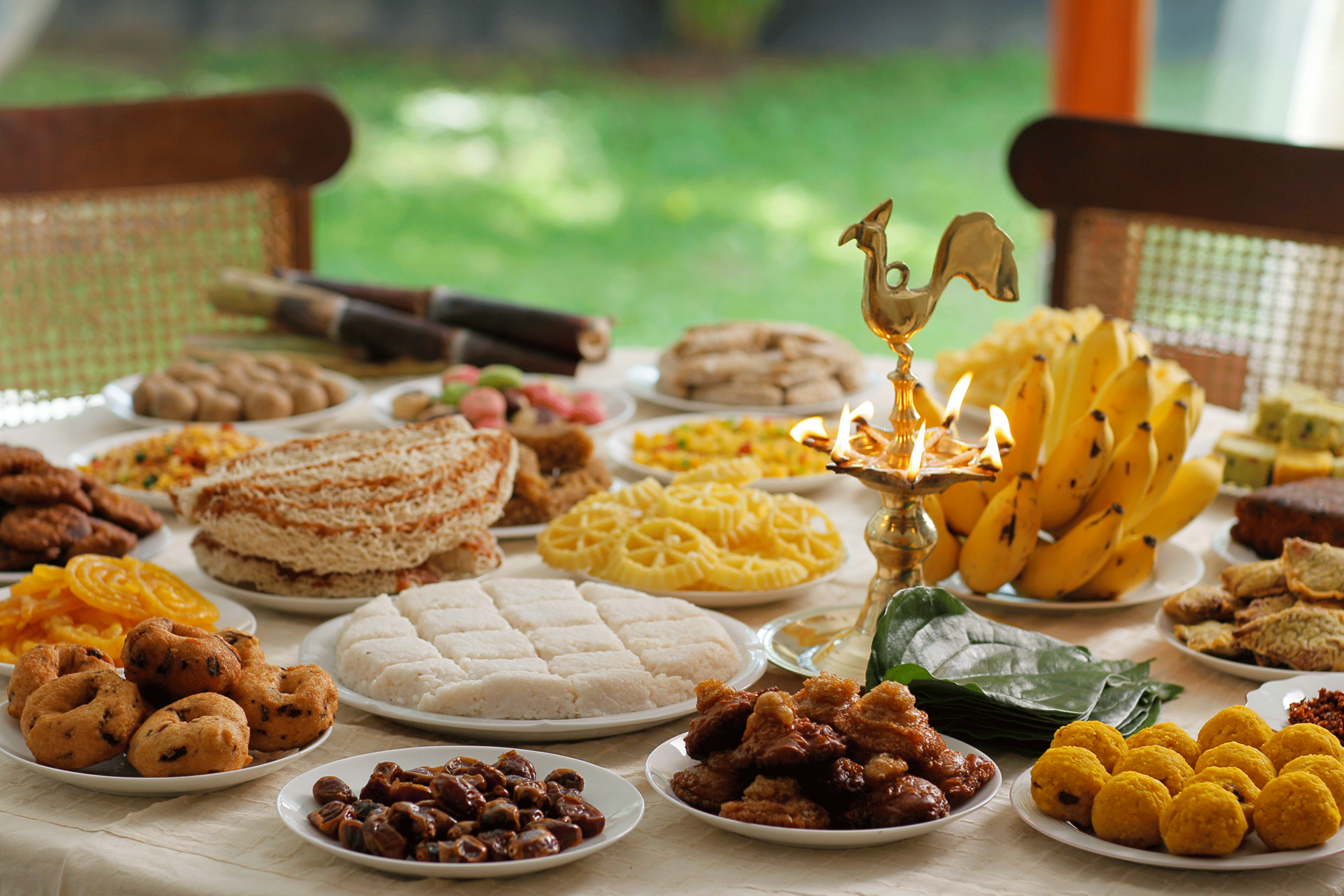Did You Know the History of Sinhala & Tamil Aluth Avurudu
 The vibrant colors of Sinhala and Tamil Aluth Avurudu, or New Year, paint a picturesque scene in Sri Lanka, resonating with centuries-old traditions and cultural significance. As we delve into the depths of this cherished celebration, we uncover a tapestry woven with ancient rituals, culinary delights, and communal joy. Join us on a journey through time as we explore the captivating history and timeless allure of Aluth Avurudu.
The vibrant colors of Sinhala and Tamil Aluth Avurudu, or New Year, paint a picturesque scene in Sri Lanka, resonating with centuries-old traditions and cultural significance. As we delve into the depths of this cherished celebration, we uncover a tapestry woven with ancient rituals, culinary delights, and communal joy. Join us on a journey through time as we explore the captivating history and timeless allure of Aluth Avurudu.
Introduction to Aluth Avurudu
Aluth Avurudu, also known as the Sinhala and Tamil New Year, stands as a beacon of cultural significance and communal celebration in Sri Lanka. Rooted in ancient traditions and cherished by generations, this festival marks the transition from the old year to the new, heralding a time of renewal, reflection, and rejoicing. Aluth Avurudu is more than just a date on the calendar; it is a testament to the resilience and spirit of the Sri Lankan people. Its origins can be traced back to centuries-old practices influenced by astrology and agricultural cycles. As the sun moves into the astrological sign of Aries, signaling the beginning of a new astrological year, communities across the island come together to honor this auspicious occasion.
Beyond its astrological significance, Aluth Avurudu holds deep cultural importance. It is a time for families to reunite, for neighbors to come together, and for communities to celebrate their shared heritage. From the bustling streets of Colombo to the serene villages of Jaffna, the spirit of Aluth Avurudu permeates every corner of the island, uniting people of all backgrounds in joyous celebration.
The History of Aluth Avurudu
The history of Aluth Avurudu, also known as Sinhala and Tamil New Year, is deeply rooted in the rich cultural heritage of Sri Lanka. This traditional celebration marks the beginning of the new year according to the Sinhala and Tamil calendars and holds significant historical and cultural importance. The origins of Aluth Avurudu can be traced back to ancient Sri Lanka, where it originated from a blend of astrological observations and agricultural practices. In the agrarian society of ancient Sri Lanka, the transition from one agricultural season to another was closely tied to celestial movements and natural phenomena. Thus, the New Year celebration became intertwined with the cycles of nature and the agricultural calendar. The festival’s timing is determined by astrological calculations, marking the moment of transition from the old year to the new. This auspicious time, known as the “Aluth Sahal Mangallaya,” is observed with great reverence and is believed to herald prosperity and good fortune for the year ahead. Throughout history, Aluth Avurudu has evolved in response to changing social, cultural, and political dynamics. The influence of various dynasties, colonial powers, and religious traditions has shaped the festival’s customs and practices over time. Despite these influences, the essence of Aluth Avurudu has remained deeply rooted in the cultural fabric of Sri Lanka, serving as a symbol of unity, renewal, and continuity.
The festival is characterized by a myriad of customs, rituals, and traditions that vary between the Sinhala and Tamil communities. From the meticulous cleaning of homes to the preparation of traditional sweets and delicacies, every aspect of Aluth Avurudu is steeped in symbolism and significance. Aluth Avurudu is not only a time for celebration but also a period of spiritual reflection and cultural reverence. Families gather to partake in religious ceremonies, visit temples and kovils, and seek blessings for prosperity and happiness in the year ahead. In recent years, efforts have been made to preserve and promote the cultural heritage of Aluth Avurudu, ensuring that future generations continue to cherish and celebrate this cherished tradition. From community events to cultural initiatives, Aluth Avurudu continues to thrive as a vibrant expression of Sri Lanka’s rich cultural identity.
Different Traditions: Aluth Avurudu in Sinhala
Celebrated with much passion and excitement, Sinhala Aluth Avurudu has its basis in traditional practices and ceremonies that have been handed down through the ages. Here’s an in-depth examination at a few of the most important tradition:
1. Getting Ready and Customs
Families start weeks in advance of Sinhala Aluth Avurudu, when they prepare by doing extensive cleaning, or “gama gema.” This custom represents the purging of the negative from the previous year and the joyful and pure start of the new one. Bright decorations adorn homes, elaborate kolam patterns are created at the entryway, and traditional oil lamps are lit to light up the neighborhood.
2. Traditional Rituals
On the day of Aluth Avurudu, families gather before sunrise to engage in auspicious rituals. One such ritual is the lighting of the hearth (Hath Maluwa), where a traditional clay pot filled with milk is boiled, symbolizing prosperity and abundance in the coming year. Another significant custom is the partaking of the first meal of the new year (Kiri Bath), a special dish made of milk rice served with a variety of accompaniments.
3. The importance of Festivities
Symbolism is important during the celebrations of Sinhala Aluth Avurudu. Each part has a deeper meaning, from the exchange of areca nuts and betel leaves to the colors of the decorations, which stand for happiness and prosperity to kindness and unity. The customary games that are played during the celebrations also have symbolic meaning; they represent themes of good fortune, strategy, and cooperation.
4. Involvement with the Community
Sinhala Aluth Avurudu is a community festival as well as a family event. As they join in the happy celebrations, neighbors exchange pleasantries, candies, and well wishes. To promote a sense of solidarity and togetherness among all, community centers and temples provide cultural activities like as theater productions, musical concerts, and traditional dances.
5. Cultural Restoration
The significance that Sinhala Aluth Avurudu plays in safeguarding Sri Lanka’s rich cultural history is among its most noteworthy features. Communities continue to transmit on these ancient customs from one generation to the next, unwavering in the face of modernization’s influence. The dedication to safeguarding cultural history guarantees the longevity of Aluth Avurudu, acting as a source of pride and cultural identity for the Sinhala population.
We will be participating in the World Tea Expo 2024 in Las Vegas from March 18th to 20th. Please visit our Booth # 2038.
Distinctive cultures: Tamil Aluth Avurudu
While Sinhala Aluth Avurudu and Tamil Aluth Avurudu are similar, Tamil Aluth Avurudu has its own set of traditions, celebrations, and rituals that represent the unique cultural identity of the Tamil population. The following unusual customs were witnessed at Tamil Aluth Avurudu:
1. Cultural Differences:
What distinguishes Tamil Aluth Avurudu from Sinhala customs are its distinct cultural differences. Some of these distinctions are derived from strongly ingrained Tamil customs, attire, and food preferences.
2. Standard Desserts and Foods:
Enjoy a delicious selection of traditional dishes and snacks that bear special importance as we commemorate Tamil Aluth Avurudu. The sweet and savoury meals of Tamil Aluth Avurudu, such as vadais and sambar, as well as the sweet treats of paal payasam and adhirasam, entice the palate and bring back memories of bygone eras.
Sinhala & Tamil Aluth Avurudu (New Year) Sweets Package -S1

PACKAGE S1 – Free Shipping ( Pre-Order Now)
Ribbon Cake 500g
Date Cake 500g
Chocolate Roll 600g
Kaludodol 250g
Delivery Starts on March 25th, 2024 ( order cut-off date March 24th, 2024)
3. Observances of Religion:
Tamil Aluth Avurudu celebrations are heavily influenced by religion; pious Hindus frequently start the day with prayers and temple visits. The purpose of special pujas and rituals is to ask the gods for blessings for happiness, health, and success in the next year.
4. Cultural Happenings:
During Aluth Avurudu, Tamil families get together to celebrate their cultural history and build ties within the community. Laughter, conversation, and a sharing of experiences are central to vibrant events decorated with traditional decorations and kolam designs.
5. Symbols in Festivities:
Similar to Sinhala Aluth Avurudu, Tamil Aluth Avurudu is rich in symbolism, with deeper meanings attached to each rite and tradition. Every action, from exchanging presents and greetings to lighting lamps, is infused with significance that pays tribute to Tamil culture and customs.
Tamil Aluth Avurudu is essentially a celebration of community, identity, and cultural resiliency that blends historical customs with contemporary manifestations of Tamil pride. It’s a time to pay tribute to the past, enjoy the present, and look forward to the future with optimism.
Historical Evolution
The historical evolution of Aluth Avurudu, the Sinhala and Tamil New Year festival, is a fascinating journey that reflects the changing tides of Sri Lanka’s cultural landscape over the centuries. Rooted in ancient traditions and influenced by external forces, the festival has undergone a dynamic evolution while retaining its core essence.
1. Ancient Origins: Aluth Avurudu has its roots in prehistoric Sri Lanka, when it first appeared as a festival closely linked to astrological predictions and agricultural cycles. The event, which heralded the start of the harvest season and symbolized rebirth and rejuvenation, used to signify the change of the old year to the new.
2. Impact of Colonial Rule: When Portuguese, Dutch, and British colonial forces arrived in Sri Lanka, they drastically altered the island’s cultural landscape. Despite the suppression or alteration of some components of Aluth Avurudu throughout the colonial era, the event persevered by adjusting to new conditions and fusing elements from other cultural influences.
3. Modern Adaptations: Aluth Avurudu had a rebirth following independence as Sri Lankans looked to reinforce their cultural identity and history. Modern adaptations started to appear, reflecting shifting society norms and tastes, even as old customs and rituals continued to play a prominent role in the celebration. For instance, the celebration of Aluth Avurudu has included new customs and innovations as a result of urbanization and globalization, which has also sparked discussions about the preservation of tradition in a world that is changing quickly.
4. Cultural Resilience: Aluth Avurudu has shown incredible resilience in the face of colonialism, globalization, and modernization, thriving as a treasured cultural heritage among the Sinhala and Tamil communities of Sri Lanka. The celebration unites individuals of all ages and promotes a feeling of identification and belonging by acting as a symbol of cultural pride.
Overall, the historical evolution of Aluth Avurudu is a testament to the resilience and adaptability of Sri Lanka’s cultural heritage. While the festival may have changed over time, its essence – as a time of renewal, reflection, and rejoicing – remains unchanged, ensuring that Aluth Avurudu continues to hold a special place in the hearts of Sri Lankans for generations to come.
Festive Season Preparations
Aluth Avurudu’s festive season preparations involve a flurry of activities meant to create a lively and inviting mood for the celebrations that lie ahead. Cleaning their homes thoroughly is a common practice among families and communities, signifying the end of negativity and the start of new beginnings. Called ‘ganu denu,’ this cleaning procedure goes beyond simple tidying and involves home repair and restoration to make sure the houses are spotless for the celebrations. Intricate kolam patterns adorn doorsteps as homes dazzle with newly discovered cleanliness; these motifs symbolize prosperity and welcome positive energy into the home. The bright decorations that cover homes and streets, such as thorana, which are created from coconut palm leaves and various fabrics, further contribute to the joyous atmosphere. In the midst of the chaos of getting ready, there’s a noticeable
Auspicious Times and Dates
The idea of auspicious times and dates has great cultural and spiritual significance in the context of Sinhala and Tamil Aluth Avurudu. Meticulous astrological calculations are used to identify these timings, which coincide with planetary alignments and celestial phenomena. Dawn is especially significant since it ushers in a new year and represents the arrival of wealth and brightness. Families get together during this auspicious time of year to participate in customs and ask for blessings for a prosperous and peaceful new year. Furthermore, dates are respected according to astrological considerations, guaranteeing that festivities align with auspicious cosmic energy. A sense of solidarity and respect for tradition are fostered by this emphasis on auspicious times and dates, which highlight the spiritual ties that bind people, their cultural legacy, and the natural rhythms of the world.
Traditional Games and Activities
At the center of Aluth Avurudu celebrations are traditional games and activities that create a sense of camaraderie among participants and act as a bridge across generations. These ancient activities, such pillow fights (kotta pora) and traditional drumming (raban pada), arouse feelings of nostalgia and fun, bringing friends and family together for competitive fun. These activities bring delight and excitement to the celebratory mood, generating cherished memories that last long after the celebrations are over, from the sound of drums beating rhythmically through the streets to the laughing of children playing traditional games.
Summary of Aluth Avurudu
Embodying the spirit of rebirth and tradition in Sri Lanka, Aluth Avurudu is a shining example of cultural diversity. We are drawn to the ageless traditions and rituals that unite communities, spanning generations and promoting a sense of solidarity, as we consider its value. Aluth Avurudu is a celebration that represents the tenacity and viability of Sri Lanka’s cultural legacy, spanning from its historical origins in astrological observations to its contemporary manifestation. People are invited to enjoy the beauty of tradition while embracing the possibility of fresh starts, serving as a poignant reminder of the values of family, community, and spirituality. Aluth Avurudu captures the atmosphere of celebration, thankfulness, and hope as we say goodbye to the old year and embrace the new, encouraging us to treasure our holidays.
Frequently Asked Questions
Q1. What is the significance of Aluth Avurudu?
Ans: Aluth Avurudu, or the Sinhala and Tamil New Year, holds profound cultural significance in Sri Lanka. It marks the beginning of the traditional New Year and is celebrated with various rituals and customs symbolizing renewal, prosperity, and unity within the community.
Q2. How do Sinhala and Tamil traditions differ during Aluth Avurudu?
Ans: While both Sinhala and Tamil communities celebrate Aluth Avurudu, there are differences in traditions and practices. For example, certain customs related to food, attire, and rituals may vary between the two communities, reflecting their unique cultural identities.
Q3. Are there any regional variations in Aluth Avurudu festivities?
Ans: Yes, there are regional variations in Aluth Avurudu celebrations across Sri Lanka. Different regions may have their own unique customs, foods, and traditions associated with the festival, influenced by local cultures and customs. These variations add to the diversity and richness of the overall celebration.




